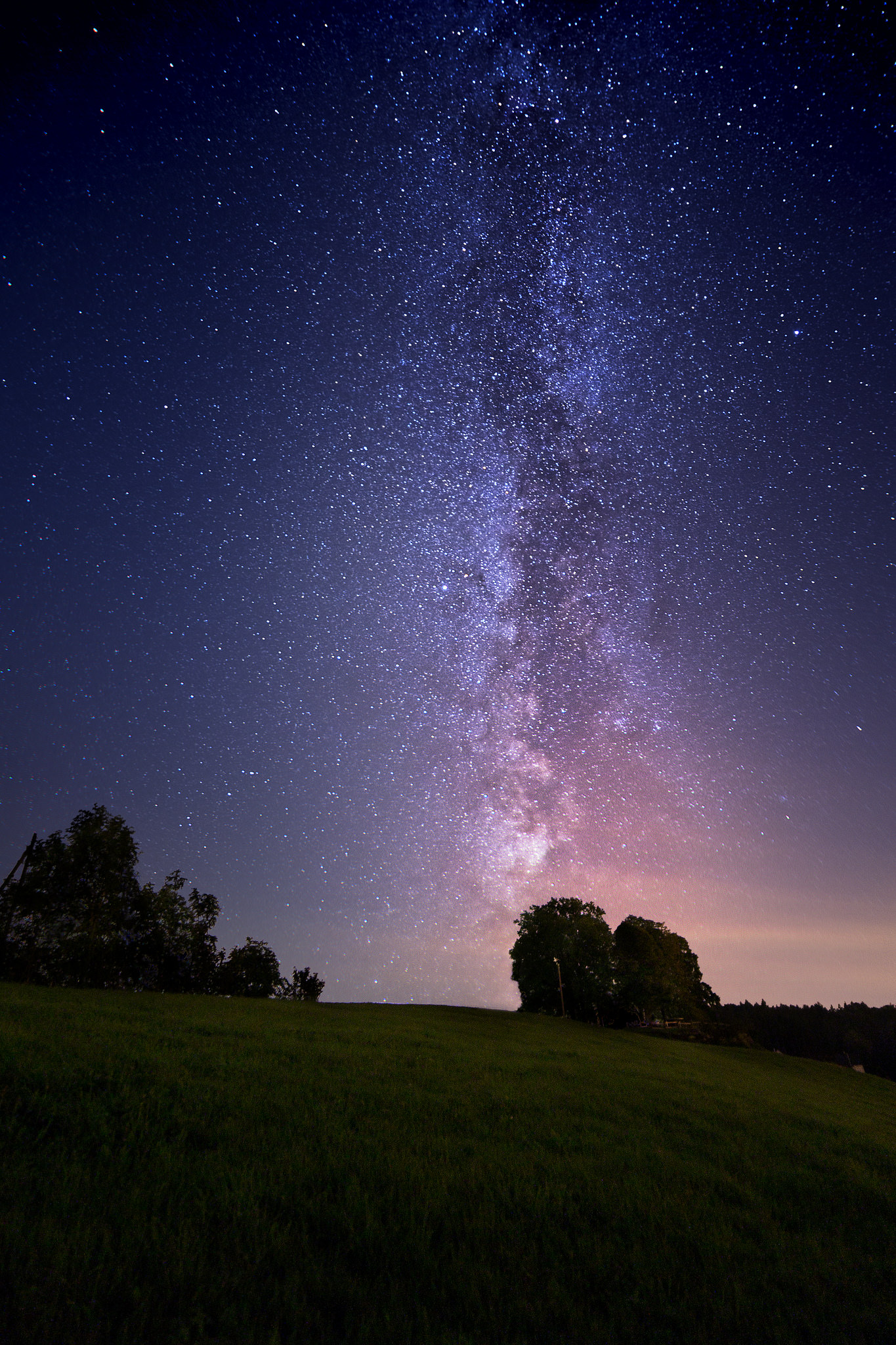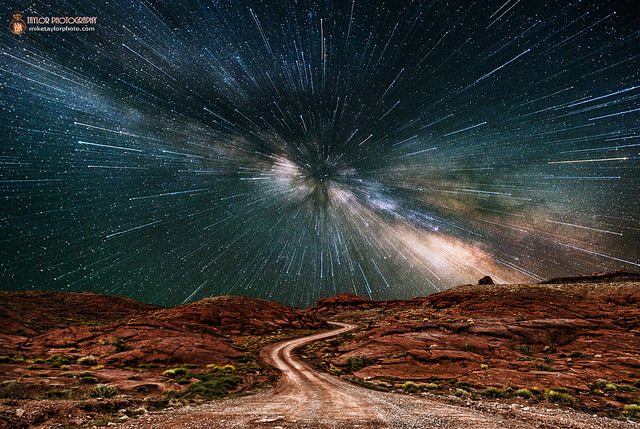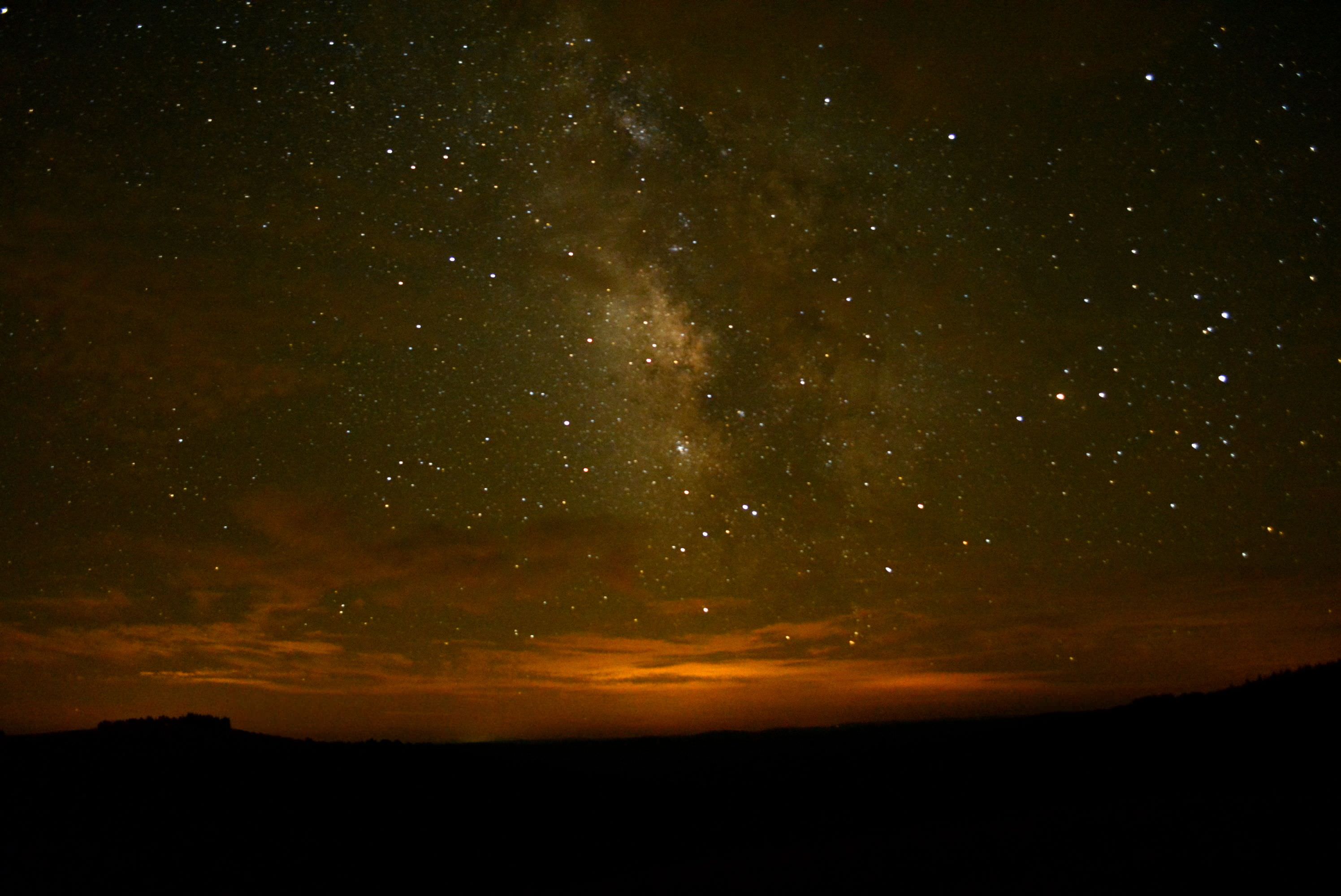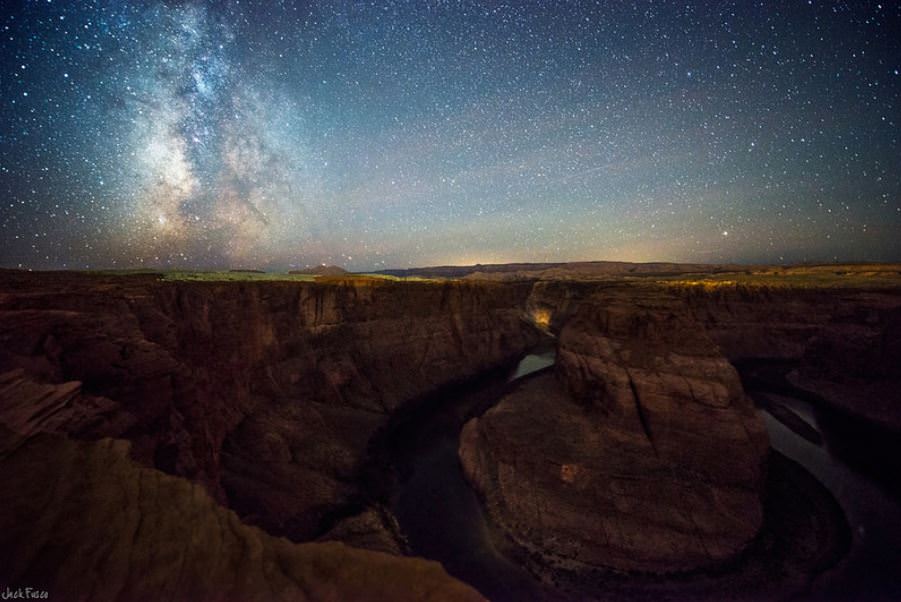Our focus on female astronomers continues with Sandra Faber, and Professor of Astronomy at UC Santa Cruz. Faber was part of the team that turned up the Great Attractor, a mysterious mass hidden by the disk of the Milky Way.
Continue reading “Astronomy Cast Ep. 358: Modern Women: Sandra Faber”
Will Gaia Be Our Next Big Exoplanet Hunter?

Early on the morning of Dec. 19, 2013, the pre-dawn sky above the coastal town of Kourou in French Guiana was briefly sliced by the brilliant exhaust of a Soyuz VS06 rocket as it ferried ESA’s “billion-star surveyor” Gaia into space, on its way to begin a five-year mission to map the precise locations of our galaxy’s stars. From its position in orbit around L2 Gaia will ultimately catalog the positions of over a billion stars… and in the meantime it will also locate a surprising amount of Jupiter-sized exoplanets – an estimated 21,000 by the end of its primary mission in 2019.
And, should Gaia continue observations in extended missions beyond 2019 improvements in detection methods will likely turn up even more exoplanets, anywhere from 50,000 to 90,000 over the course of a ten-year mission. Gaia could very well far surpass NASA’s Kepler spacecraft for exoplanet big game hunting!
“It is not just the number of expected exoplanet discoveries that is impressive”, said former mission project scientist Michael Perryman, lead author on a report titled Astrometric Exoplanet Detection with Gaia. “This particular measurement method will give us planet masses, a complete exoplanet survey around all types of stars in our Galaxy, and will advance our knowledge of the existence of massive planets orbiting far out from their host stars”.
Watch: ESA’s Gaia Launches to Map the Milky Way

The planets Gaia will be able to spot are expected to be anywhere from 1 to fifteen times the mass of Jupiter in orbit around Sun-like stars out to a distance of about 500 parsecs (1,630 light-years) from our own Solar System. Exoplanets orbiting smaller red dwarf stars will also be detectable, but only within about a fifth of that distance.
While other space observatories like NASA’s Kepler and CNES/ESA’s CoRoT were designed to detect exoplanets through the transit method, whereby a star’s brightness is dimmed ever-so-slightly by the silhouette of a passing planet, Gaia will detect particularly high-mass exoplanets by the gravitational wobble they impart to their host stars as they travel around them in orbit. This is known as the astrometric method.
A select few of those exoplanets will also be transiting their host stars as seen from Earth – anywhere from 25 to 50 of them – and so will be observable by Gaia as well as from many ground-based transit-detection observatories.
Read more: Gaia is “Go” for Science After a Few Minor Hiccups
After some issues with stray light sneaking into its optics, Gaia was finally given the green light to begin science observations at the end of July and has since been diligently scanning the stars from L2, 1.5 million km from Earth.
With the incredible ability to measure the positions of a billion stars each to an accuracy of 24 microarcseconds – that’s like measuring the width of a human hair from 1,000 km – Gaia won’t be “just” an unprecedented galactic mapmaker but also a world-class exoplanet detector! Get more facts about the Gaia mission here.
The team’s findings have been accepted for publication in The Astrophysical Journal.
Source: ESA
Completely Gorgeous Shot of the Milky Way Over Jasper National Park

Does it get any more gorgeous than this? What an absolutely beautiful view of the night sky over Lake Annette and Whistler’s Mountain in Jasper National Park.
“I shot this at the Lake Annette Star Party, one of the Dark Sky Festival events, using the Canon 60Da and 10-22mm lens at 10mm f/4 and ISO 3200 for 1 minute, untracked,” said prolific astrophotographer Alan Dyer on Flickr. “Shot October 24, 2014, with fresh snow on Whistler across the lake and valley and on a calm night with still waters reflecting the stars.”
Absolutely spell-binding! Click on the image for larger versions on Flickr, and check out more of Alan’s stunning imagery on his website, Amazing Sky Photography.
#MilkyWayMonday
Want to get your astrophoto featured on Universe Today? Join our Flickr group or send us your images by email (this means you’re giving us permission to post them). Please explain what’s in the picture, when you took it, the equipment you used, etc.
Weekly Space Hangout – Oct. 24, 2014
Host: Fraser Cain (@fcain)
Guests:
Ramin Skibba (@raminskibba)
Continue reading “Weekly Space Hangout – Oct. 24, 2014”
What Part of the Milky Way Can We See?
When you look up and see the Milky Way, you’re gazing into the heart of our home galaxy. What, exactly, are we looking at?
Anyone who’s ever been in truly dark skies has seen the Milky Way. The bright band across the sky is unmistakable. It’s a view of our home galaxy from within.
As you stare out into the skies and see that splash of stars, have you ever wondered, what are you looking at? Which parts are towards the inside of the galaxy and which parts are looking out? Where’s that supermassive black hole you’ve heard so much about?
In order to see the Milky Way at all, you need seriously dark skies, away from the light polluted city. As the skies darken, the Milky Way will appear as a hazy fog across the sky.
Imagine it as this vast disk of stars, with the Sun embedded right in it, about 27,000 light-years from the core. We’re seeing the galaxy edge on, from the inside, and so we see the galactic disk as a band that forms a complete circle around the sky.
Which parts you can see depend on your location on Earth and the time of year, but you can always see some part of the disk.
The galactic core of the Milky Way is located in the constellation Sagittarius, which is located to the South of me in Canada, and only really visible during the Summer. In really faint skies, the Milky Way is clearly thicker and brighter in that region.
Want to know the exact point of the galactic core? It’s right… there.
During the Winter, we’re looking away from the galactic core to the outer regions of the galaxy. It still has the same band of stars, but it’s thinner and without the darker clouds of dust that obscure our view to the galactic core.
How do astronomers even know that we’re in a spiral galaxy anyway?
There are two major types of galaxies, spiral galaxies and elliptical galaxies.
Elliptical galaxies are made up of so many galactic collisions, they’re nothing more than vast balls of trillions of stars, with no structure. Because we can see a distinct band in the sky, we know we’re in some kind of spiral.

Astronomers map the arms by looking at the distribution of gas, which pulls together in star forming spiral arms. They can tell how far the major arms are from the Sun and in which direction.
The trick is that half the Milky Way is obscured by gas and dust. So we don’t really know what structures are on the other side of the galactic disk. With more powerful infrared telescopes, we’ll eventually be able to see though the gas and dust and map out all the spiral arms.
If you’ve never seen the Milky Way with your own eyes, you need to. Get far enough away from city lights to truly see the galaxy you live in.
The best resource is “The Dark Sky Finder”, we’ll put a link in the show notes.
Have you ever seen the Milky Way? If not, why not? Let’s hear a story of a time you finally saw it.
And if you like what you see, come check out our Patreon page and find out how you can get these videos early while helping us bring you more great content!
Astrophoto: Nighttime at Horseshoe Bend
As the Milky Way now begins to set earlier in the evening here in the northern hemisphere, that doesn’t mean the photos of our night sky are any less stunning. This lovely shot for #TerrestrialTuesday by photographer Jack Fusco was taken this week at Horseshoe Bend in Arizona, a horseshoe-shaped meander of the Colorado River.
“During the day, the walk to Horseshoe Bend was full of tourists from all over the world,” Jack explained on Flickr. “At night, we sat alone and stared up at a brilliant star filled sky and only heard coyotes in the distance. It was an absolutely incredible location during the day and at night. This was shot with no Moon at the sky, so the area was at it’s absolute darkest. I was a little nervous setting up my gear for this shot as my tripod was just a few inches from a 1000ft drop down to the river. It was certainly an experience I’ll never forget.”
See more of Jack’s work on Flickr, Google+ and his website, www.jackfusco.com
Want to get your astrophoto featured on Universe Today? Join our Flickr group or send us your images by email (this means you’re giving us permission to post them). Please explain what’s in the picture, when you took it, the equipment you used, etc.
Stunning Astrophoto: Milky Way Over Fünfländerblick

Hey, it’s #MilkyWayMonday! This gorgeous photo of the Milky Way was taken by astrophotographer Christian Kamber near Fu?nfla?nderblick, Switzerland (you can see the region on a map here). This is a stack of 20 shots, made with Deep Sky Stacker and Photoshop.
Lovely!
Want to get your astrophoto featured on Universe Today? Join our Flickr group or send us your images by email (this means you’re giving us permission to post them). Please explain what’s in the picture, when you took it, the equipment you used, etc.
Amazing Timelapse: Watch the Milky Way Spin Above the Space Station

Have you ever sat outside on a starry night and just watched the stars move slowly above you? Here’s a video that shows what it is like to sit back on a spaceship and gaze at the ever-changing sky above.
This timelapse was compiled from recent images taken from the International Space Station. Hugh Carrick-Allan, a 3D Animator/VFX artist living in Sydney Australia used a sequence of 52 images posted on the NASA Crew Earth Observation website. The video also features the Aurora Australis and and some random satellites.
He also created the beautiful image below by combining all 52 the images.
“I used DeepSkyStacker to stack the images, I used PixInsight for some heavy noise reduction on the foreground, and then I combined and tweaked everything in Photoshop,” Carrick-Allan wrote on his website.
Astrophoto: I Need Warp Speed in 3 Minutes or We’re All Dead

Whoa! Having just returned from the science and science fiction mashup that is Dragon Con, my mind is still combining the two. Then I saw this image from Mike Taylor, which is one of the most unique Milky Way images I’ve ever seen. Perfect!
Mike said he combined two images, one for the foreground and one for the night sky image of the Milky Way. “I zoomed in on the Milky Way for the last 10 seconds of the exposure to give it the “warp speed” look,” he said.
He calls the image “Somniloquy” which is a term that describes the act of talking while asleep. Yep. I’m pretty sure that happened at Dragon Con, too….
Check out another awesome Milky Way image by Mike, below.

Mike noted this image was taken right next to a cell tower that emits a red light over the landscape throughout the night. “Normally I would change the color balance but I decided to leave the red color in the foreground (although I toned it down quite a bit) to add to the overall feeling of the image,” he said. Mike stitched the images together via PTGui and processed through Lightroom 5 & Photoshop CS5.
Nikon D600 & 14-24 @ 14mm
f/2.8 – 7 x 30 secs – ISO 4000
08/28/14 – 10:20PM
You can see a discussion of this image on Mike’s G+ page.
The specs on the ‘warp speed’ image:
Milky Way image taken with a Nikon D600 & 14-24mm at 24mm, f/2.8 – 30 seconds at ISO 4000 on 05/30/14 at 1:38 AM at Goblin Valley State Park, Utah.
Foreground image also taken with the same camera at f/5.6 – 1/60 seconds at ISO 100 on 05/25/14 at 6:28 PM, on Potash Rd near Moab, Utah.
Mike offers photography classes, and you can find out more about when/where here.
Want to get your astrophoto featured on Universe Today? Join our Flickr group or send us your images by email (this means you’re giving us permission to post them). Please explain what’s in the picture, when you took it, the equipment you used, etc.
Astrophoto: Clouds Above, Clouds Below

What a gorgeous view of the dusty cloud of the Milky Way arch hovering over clouds low on the horizon here on Earth! Fellow NASA Solar System Ambassador Greg Redfern took this image of our galactic center in the constellation Sagittarius.
“If you have dark skies look to the south to see this grand spectacle,” Greg said via email. “It stretches across the entire sky.”
Greg shot the image during the Almost Heaven Star Party, an annual astronomy event sponsored by the Northern Virginia Astronomy Club. The star party is held in Spruce Knob, West Virginia, which boasts the darkest skies in the mid-Atlantic region of the US.
Want to get your astrophoto featured on Universe Today? Join our Flickr group or send us your images by email (this means you’re giving us permission to post them). Please explain what’s in the picture, when you took it, the equipment you used, etc.


